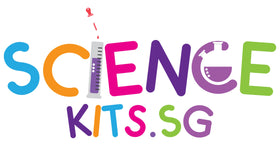
Science Toys for Kids: Engaging and Educational Fun for Young Minds
Introduction
In a world increasingly driven by technology and innovation, it's essential to nurture a child’s natural curiosity and love for learning from an early age. Science toys are a fantastic way to engage young minds, combining fun with education. These toys can spark interest in various scientific fields—such as physics, chemistry, biology, and engineering—while developing critical thinking and problem-solving skills. In this article, we'll explore some of the best science toys for kids that are both engaging and educational.
1. Microscope Kits: Exploring the Hidden World

Educational Focus: Biology, Observation Skills
Microscope kits are a gateway to the microscopic world that surrounds us. For young children, these kits often come with prepared slides, such as leaves, insects, or fabrics, that they can examine closely. As kids grow older, they can collect their own samples—like pond water or flower petals—to explore under the lens. Using a microscope helps develop observation skills and introduces concepts such as cell structure and microorganisms.
Recommended Age: 6 and up
Why It's Great: It fosters a hands-on approach to biology and encourages exploration of the natural world.
2. Chemistry Sets: The Magic of Chemical Reactions

Educational Focus: Chemistry, Scientific Method
Chemistry sets have been a staple in science education for decades. These kits allow children to perform safe, fun experiments that demonstrate basic chemical reactions. From creating colorful solutions to watching a baking soda volcano erupt, chemistry sets introduce children to concepts like acids and bases, chemical reactions, and the scientific method. Many modern kits are designed with safety in mind, using non-toxic chemicals and clear instructions.
Recommended Age: 8 and up
Why It's Great: It offers a tangible way to explore chemistry, making abstract concepts accessible and exciting.
3. Build Your Own Robot Kits: Engineering and Robotics

Educational Focus: Engineering, Programming, Robotics
For kids interested in engineering and technology, robot-building kits are an excellent choice. These kits range from simple snap-together robots that follow basic commands to more advanced sets that introduce programming concepts. Building and programming a robot teaches children about circuits, mechanics, and the basics of coding, all while encouraging creativity and problem-solving.
Recommended Age: 7 and up
Why It's Great: It merges creativity with technology, providing a comprehensive introduction to robotics and engineering.
4. Solar-Powered Toys: Harnessing Renewable Energy

Educational Focus: Renewable Energy, Environmental Science
Solar-powered toys are a fantastic way to teach children about renewable energy and sustainability. These kits often include components to build a variety of moving models—like cars, boats, or planes—that run on solar energy. Children learn about the power of the sun and how it can be converted into energy to perform work. These toys also open up discussions about the importance of renewable resources and environmental conservation.
Recommended Age: 6 and up
Why It's Great: It introduces children to the concept of renewable energy and its potential to power the future.
5. Circuit Kits: The Basics of Electricity

Educational Focus: Physics, Electrical Engineering
Circuit kits are designed to introduce children to the fundamentals of electricity and circuits. These kits often include components like wires, batteries, light bulbs, and switches that can be connected in various ways to create functioning circuits. Children can experiment with creating series and parallel circuits, understanding how electricity flows and powers different devices. Some kits even include components to build more complex projects, like radios or alarm systems.
Recommended Age: 8 and up
Why It's Great: It demystifies the principles of electricity, providing a solid foundation in physics and engineering.
6. Crystal Growing Kits: The Science of Crystallization

Educational Focus: Geology, Chemistry
Crystal growing kits allow children to witness the process of crystallization firsthand. These kits typically involve dissolving a chemical compound in water and letting the solution evaporate to form crystals. Children can grow their own colorful crystals, learning about the properties of minerals and the science behind crystal formation. This type of kit combines chemistry with geology, making it a fascinating and visually rewarding project.
Recommended Age: 7 and up
Why It's Great: It provides a hands-on experience with geology and chemistry, resulting in beautiful crystal formations that kids can display.
Conclusion
Science toys are more than just playthings—they are powerful tools that can ignite a passion for learning in children. By engaging with these toys, kids not only have fun but also gain a deeper understanding of the world around them. Whether it’s through building a robot, observing microorganisms, or experimenting with chemical reactions, science toys lay the foundation for critical thinking, creativity, and a lifelong love of discovery. As parents and educators, investing in these educational toys can help cultivate the next generation of scientists, engineers, and innovators.
